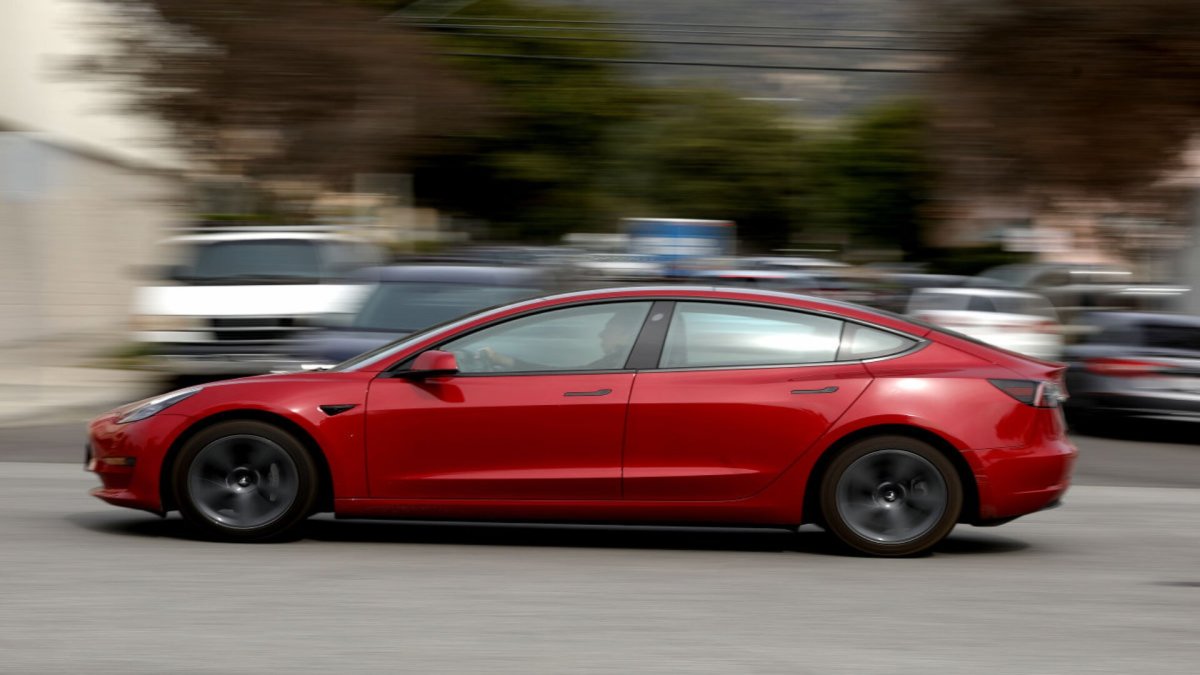Tesla's Weak Sales Don't Worry Investors

Tesla's Struggles and the Future of the Electric Vehicle Market
Tesla has faced a challenging period over the past 18 months, with its stock performance reflecting the company’s ongoing difficulties. While the electric vehicle maker had a strong start in late 2024, driven by investor optimism following President Donald Trump’s election win and Elon Musk’s close ties to the new administration, the momentum quickly faded. By early 2025, Tesla shares had dropped more than 30% from their all-time high, signaling a significant downturn.
Despite these challenges, many investors remain optimistic about Tesla’s long-term potential. The company reported its first year-over-year sales decline in 2024, but this did not deter some of the most ardent supporters of the brand. Investors like Cathie Wood, CEO of Ark Invest, continue to view Tesla as more than just a car manufacturer. Instead, they believe that the company’s future innovations, such as its autonomous technology, will be the key to its success.
Wood recently highlighted her confidence in Tesla’s long-term vision, stating that her target for the company is $2,600 per share. She noted that the recent commercialization of Robotaxis in August and June has further bolstered her belief in the company’s future value. However, achieving this vision will require navigating a number of obstacles.
Financial Challenges and Investor Sentiment
Currently, Tesla’s stock is highly volatile, often experiencing sharp declines in the premarket and early trading hours before recovering. The company is set to release its earnings report after the market closes, and investors are closely watching for signs of improvement. As of July 23, Tesla’s price-to-earnings (P/E) ratio stands at 189.60, significantly higher than its average P/E ratio of 111.64 over the past decade. For comparison, the average P/E ratio for the Magnificent 7 stocks—comprising major tech companies like Alphabet, Meta, Microsoft, and Amazon—is around 35x.
This high valuation reflects the market’s expectations for Tesla’s future growth, but it also highlights the risks associated with investing in a company that is still grappling with declining sales and demand. Analysts expect Tesla to report earnings of 40 cents per share on revenue of $22.13 billion, representing a 13% year-over-year decline. These numbers underscore the challenges the company faces as it works to regain its footing in the competitive automotive industry.
Sales Declines and Market Shifts
Tesla has been struggling with declining sales for nearly 18 months, a trend that has only worsened with Elon Musk’s increasing involvement in politics. In the second quarter, the company delivered just 384,122 vehicles, a 13.5% year-over-year decline that fell short of analyst estimates by approximately 3,000 units. During the Qatar Economic Forum in May, Musk dismissed concerns about the company’s performance, claiming that “it’s already turned around.” He added that Europe remains Tesla’s weakest market, but the company is performing well elsewhere and does not anticipate any shortfall.
However, recent data suggests otherwise. Tesla’s sales in California fell by 21% in the second quarter, reaching 41,138 units. This marks the seventh consecutive quarter of year-over-year declines and the fourth consecutive sequential quarterly decline. The shift in consumer preferences toward hybrid vehicles is a key factor in this decline. According to the California New Car Dealers Association, hybrid vehicle registrations have increased by 54% this year, now accounting for 19.2% of the market.
The Road Ahead for Tesla
As Tesla continues to navigate these challenges, the company must address several critical issues. The expiration of the $7,500 tax credit for American-made electric vehicles in September could further impact sales. Additionally, the growing popularity of hybrid vehicles in key markets like California, Europe, and China presents a significant hurdle for Tesla’s expansion plans.
Despite these headwinds, some investors remain confident in Tesla’s ability to innovate and adapt. The company’s focus on autonomous technology, including the development of robotaxis, represents a potential game-changer. However, realizing this vision will require overcoming financial, political, and market-related obstacles. For now, Tesla’s future remains uncertain, but its long-term potential continues to capture the attention of investors willing to take the risk.